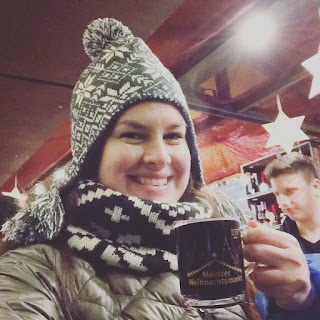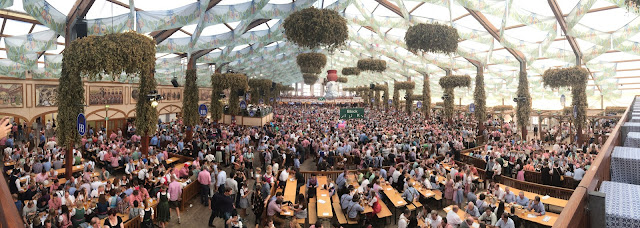When traveling,
everything is a tradeoff so it is important to know what is most important to
you. The destination or getting away? Avoiding a layover or a more desirable
departure time? Maximizing your time on a trip or staying a little farther out
and using public transport? Basically everything comes down to time and money.
When both are limited, the first step is deciding which is most important to
you. Here are some tips and tricks I’ve learned over my time traveling that I
hope help you enjoy Europe.
Getting There:
Living on an island
makes this tricky, add to that the limited places that you can fly to directly
out of Catania and you, like me, will probably develop an abhorrence of the
Rome airport. But if you aren’t shooting for a specific date you can check out the
Catania airport timetable which lays out when you can fly direct to certain
destinations throughout the year. aeroporto.catania.it/voli/ricerca-voli/
If you have specific dates but not a specific location try skyscanner.com. they
have an “Everywhere” option to help you figure out what is cheap and possible.
Also, don’t forget about the Comiso airport. It has some great flights and is
only about an hour away. Matrix Airfare Search is another option if you are
looking for the cheapest option for flights somewhere specific. matrix.itasoftware.com. I
would also suggest signing up for newsletters from various airlines like
EasyJet or Ryan Air for some great deals on flights.
Where to Stay:
This is another area
where you can save or splurge. If you stay farther outside the main part of a
city it can be cheaper but you have to factor in the time (and possible
transportation costs) it will take to get to everything you want to see. Old
classics like Booking.com, Expedia, and Travelocity are very good for hotels, but
I personally enjoy the AirBnb experience. I like feeling like I live in the
city even if just for a weekend. This can be cheaper than a hotel, and many
times the host has amenities and helpful advice so you can get the most out of
your trip. Hostels are an option that I tend to stay away from after watching a
certain horror movie (just saying.) Regardless do some research ahead of time
and figure out what parts of the city you are going to spend
the most time in. Book close to there or at least closer to public
transportation.
What To Do:
We are surrounded by
rich culture every day and the rest of Europe has even more to offer. The first
place I look when going to a new place is Pinterest. There are lots of travel
bloggers out there who have suggestions. This will help you get an idea of when
to travel, to either enjoy or avoid big festivals, and what to see. Some even
have sample itineraries so you can maximize your short time. These can also
give you an idea of what you will need to book ahead (i.e. tickets for the
Borghese Museum in Rome or the Anne Frank House in Amsterdam) and what you can
do on the fly. You should also look to see if the city you’re travelling to has
a pass card. These can offer free or discounted rates for museums and public transportation.
If you plan to see multiple museums on your trip they often pay for themselves.
Now let’s talk about
tours, some are great, some are terrible. There are some companies that are
pretty ubiquitous around Europe, like Viator and Get Your Guide, and there are
many local companies as well. Some cities have free walking tours that are done
by local volunteers who just love showing off where they live. Do a search
ahead of time because even though they are free you may need to sign up in
advance. I personally love food tours.
Food is very elementally
linked to culture and I think it gives a really colorful view of the history of
a country when you understand why they eat the cuisine you see. If you like to
see the wackier side of a city the site atlasobscura.com has some great spots off the beaten path.
Ideally I recommend only
booking yourself to one time-bound thing a day, having a time limitation
looming over your head can keep you from fully enjoying whatever you are doing.
I also like to make a list of my “must sees” and other possible sights, then I
get a map as soon as I arrive either from the airport, hotel, or tourism
office, and I mark where everything I want to see is along with the opening and
closing times. That way I’m not running from one end of the city to another and
missing stuff in-between
or getting to a museum right before closing.
What To Take:
Check to see if the
place you are going has public transport and try to plan out how you will use
it. Can you get to your hotel from the airport by train? That will be much
cheaper than a cab. Many cities have transportation apps you can download on
your phone that can save loads of time and frustration. Speaking of phones,
yours will run out of juice at the very worst moment, I promise. How to avoid
getting stuck in a dark alley with a dead phone? Invest in a portable charger,
you can get one on Amazon or pick one up at Auchan for less than $20 and it
will be a life saver, trust me. This probably goes without saying, but I’ve
been guilty before, check the weather before you go! My personal favorite site
is Accuweather, but any weather site or app can give you a better idea of what
to pack. This can mean the difference between being comfortable and dry in your
raincoat and boots, and ruining a gorgeous pair of leather sandals and buying a
five euro poncho that looks ridiculous. (There is a possibility that is a true
story.) Travel insurance, you can’t really take it with you but it is worth the
investment. With the uncertain times we live in right now a city that was fine
for travel last week might be off limits next week, USAA offers travel
insurance which can pay for everything from airfare if you flight is cancelled
or delayed, to lost luggage, to the entire trip if you cancel for any reason,
there are different offers for different prices but I encourage you to take a
look especially if it is a big expensive trip. You might never need it, but the
one time you do it will be worth the $70. Most importantly bring a good
attitude, things will go wrong, just roll with it. Be friendly to the locals
and they’ll be far more likely to help you. Take in the good and the bad as
life experiences and enjoy!








